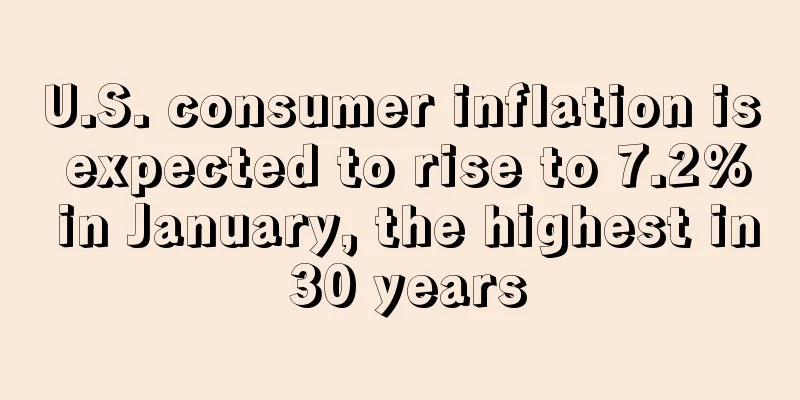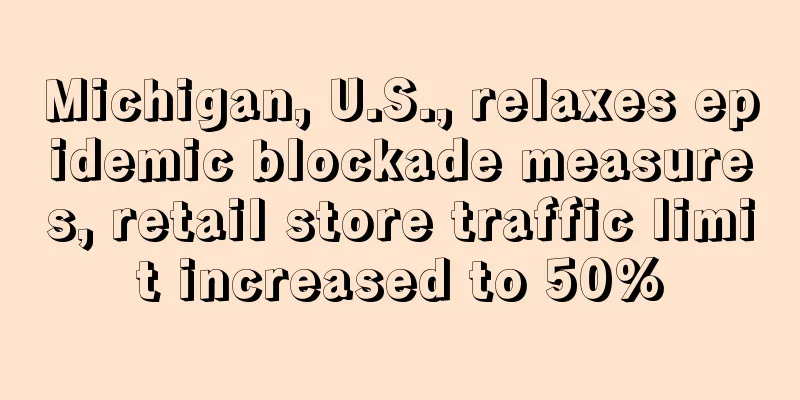U.S. consumer inflation is expected to rise to 7.2% in January, the highest in 30 years

|
The CPI, due at 8:30 a.m. ET Thursday , is expected to show growth of 0.4%, slower than the monthly increase in December, with the year-over-year forecast rising to 7.2%, the highest since 1982 and up from 7% in December.
Core inflation, which excludes food and energy, is expected to rise 0.4% in January, or 5.9% year-over-year, according to Dow Jones, compared with a monthly increase of 0.6% in December and a year-over-year increase of 5.5% in the final month of last year.
The U.S. January employment report showed that 467,000 new jobs were created in January, and the number of jobs in November and December was revised to 709,000.
Economists expect inflation’s hot annual pace to peak in March. The pandemic has made the path of inflation unique in many ways, especially since price increases had been tame until 2020.
Economists said the January CPI is likely to show early signs of a trend toward slower inflation for goods and faster increases in prices for services, including housing, that is expected to become more pronounced as 2022 unfolds. Gapen said some of the price shocks from the pandemic have begun to fade. For example, he expects used car prices to rise 2.5% in January but then start to fall.
Supply chain issues should ease this year, which should directly impact the cost of goods. However, services inflation should remain at a 4% pace this year, above the pre-pandemic level of 3%, driven by demand and wage growth, Gapen said .
"Wages are skyrocketing," said Aditya Bhave , senior U.S. and global economist at Bank of America Corp. Wages rose 0.7% in December, or at an annual rate of 5.7%, according to the Bureau of Labor Statistics.
"Wage inflation should continue , hiring is very difficult and labour force participation remains low. It's a difficult problem to solve, " he said.
"Over the next few quarters, our hope is that as these idiosyncratic factors ease, price inflation will perhaps normalize a little bit. We'll get to a point where wages are growing faster than prices, and that's healthy for the economy," Bhave said.
Bhave said the rebound in clothing prices, home goods and furniture in January was likely to be less than what typically happens in that month.
He said this was due to year-over-year comparisons, as retailers did not offer as many holiday discounts due to supply issues during the pandemic . "The lack of those discounts means you get a smaller rebound than seasonality would suggest," Bhave added. USA inflation |
Recommend
Preview of the hot-selling products in Southeast Asia during Double 12!
In six days, it will be the much-anticipated &quo...
The high-potential market is booming, with some sellers receiving 20,000 orders a day!
As Chinese products are increasingly exported, wh...
What is TaoTaoYang? TaoTaoYang Review, Features
Taotaoyang is a cross-border import e-commerce com...
What is STORE360? STORE360 Review, Features
STORE360 focuses on sales on multiple channels, f...
The government will subsidize up to 80%! Singapore's e-commerce market will exceed US$10 billion by 2025
Singapore’s e-commerce market will continue to gr...
What is Star Global? Star Global Review, Features
Founded in 2010, Hangxing International Freight (G...
Amazon launches a new private label
In addition to third-party sellers, private brand...
With annual sales exceeding 4 million US dollars, it successfully counterattacked Amazon!
A long-established domestic brand has successfull...
What is BQool
BQool is a one-stop Amazon e-commerce operation s...
Amazon's best-selling products have been removed from shelves
It is understood that a children's water cup ...
Panic! $1,400 has been received, Easter is coming, but a large number of sellers' shipments have been cancelled for no reason
Not only that, the upcoming Easter and Mother'...
The U.S. cosmetics and skin care industry is recovering, and sales continue to rise!
As consumers gradually return to normal life afte...
What is Rakuten.de? Rakuten.de Review, Features
Rakuten.de is one of the leading online trading p...
Bigo Live partners with Indonesian e-commerce company 99Koutlet to host first live streaming event
Bigo Live, the world's leading live streaming...
India accelerates digital transformation of enterprises and increases import and export efforts
India's e-commerce market is one of the faste...









